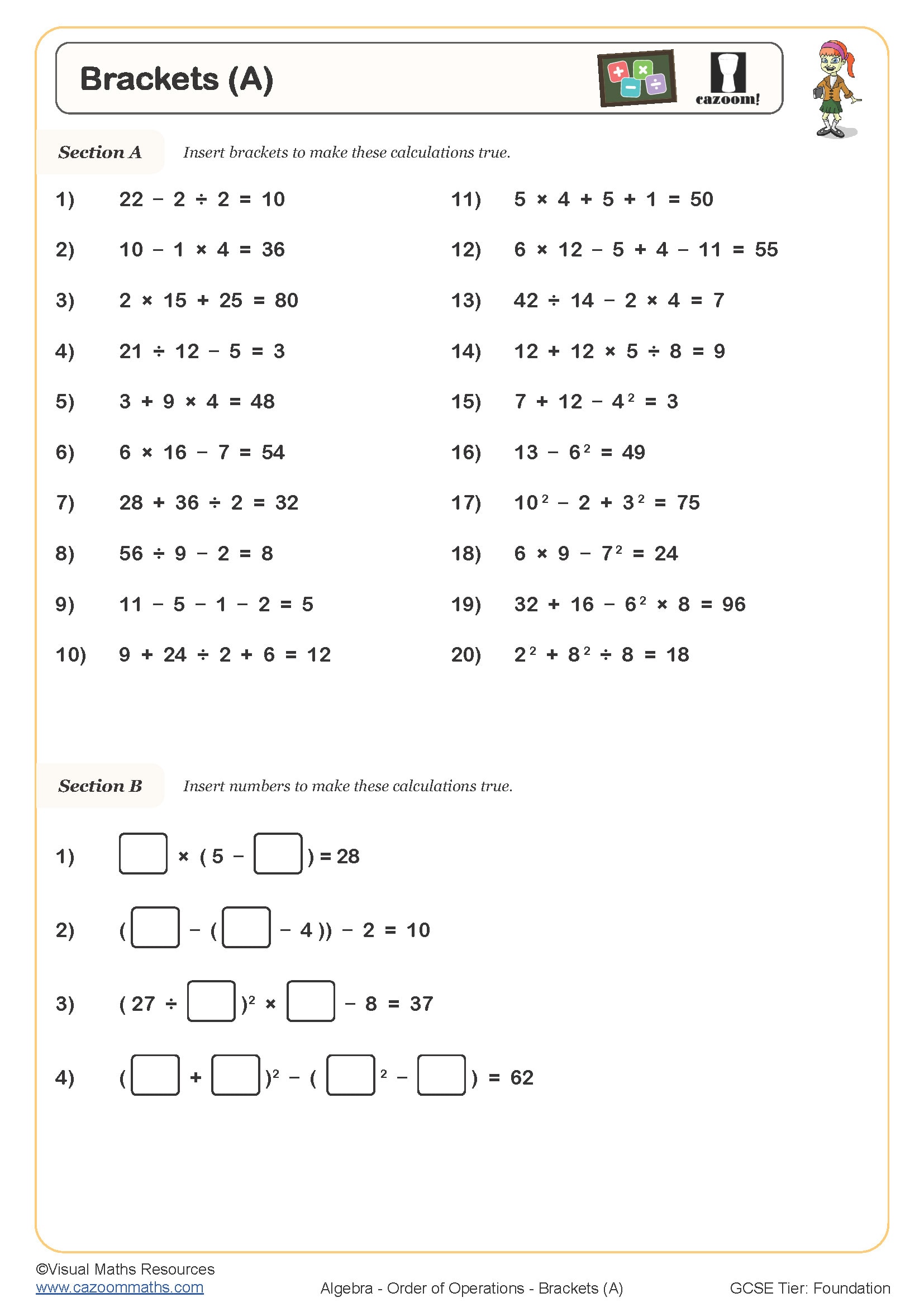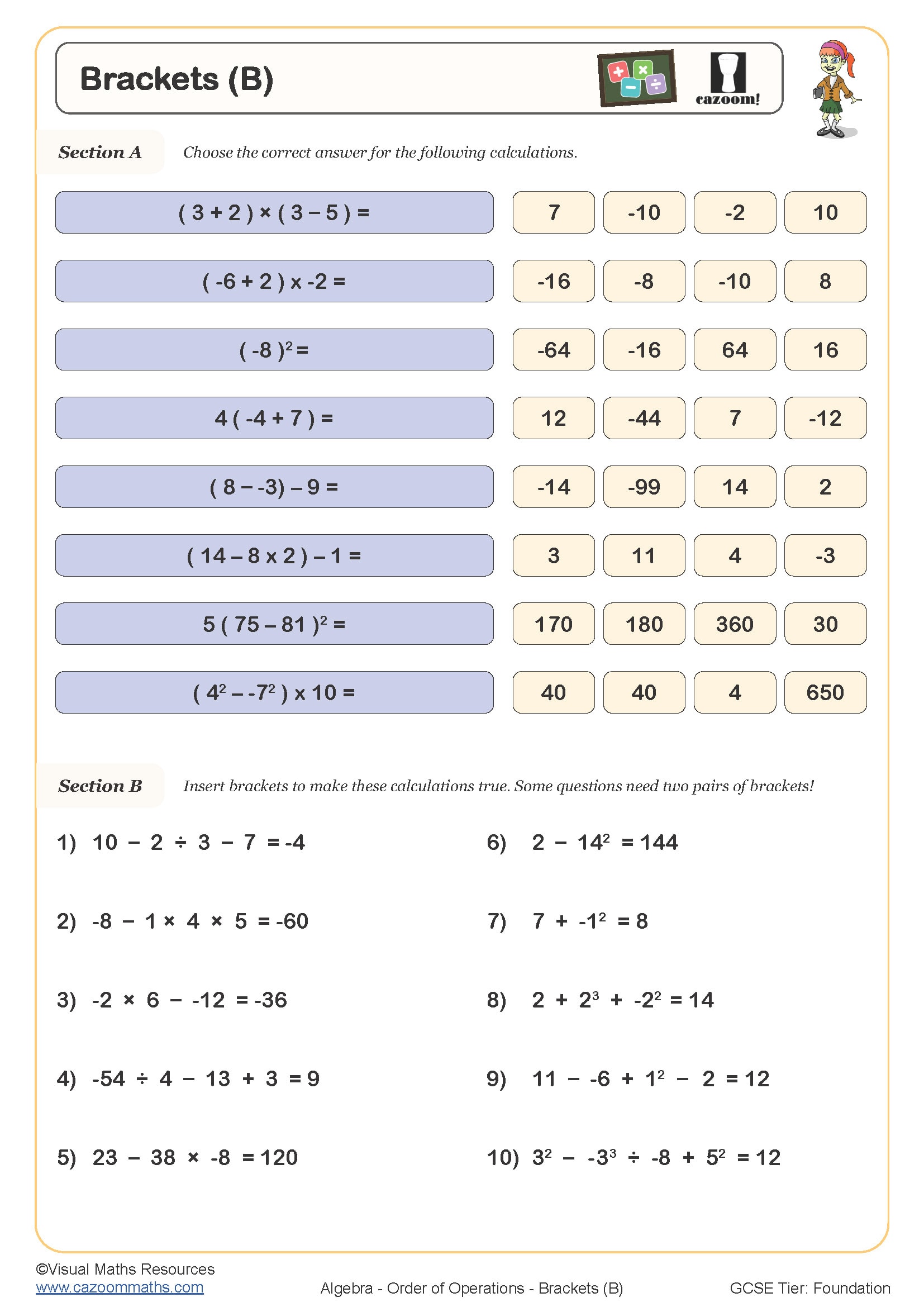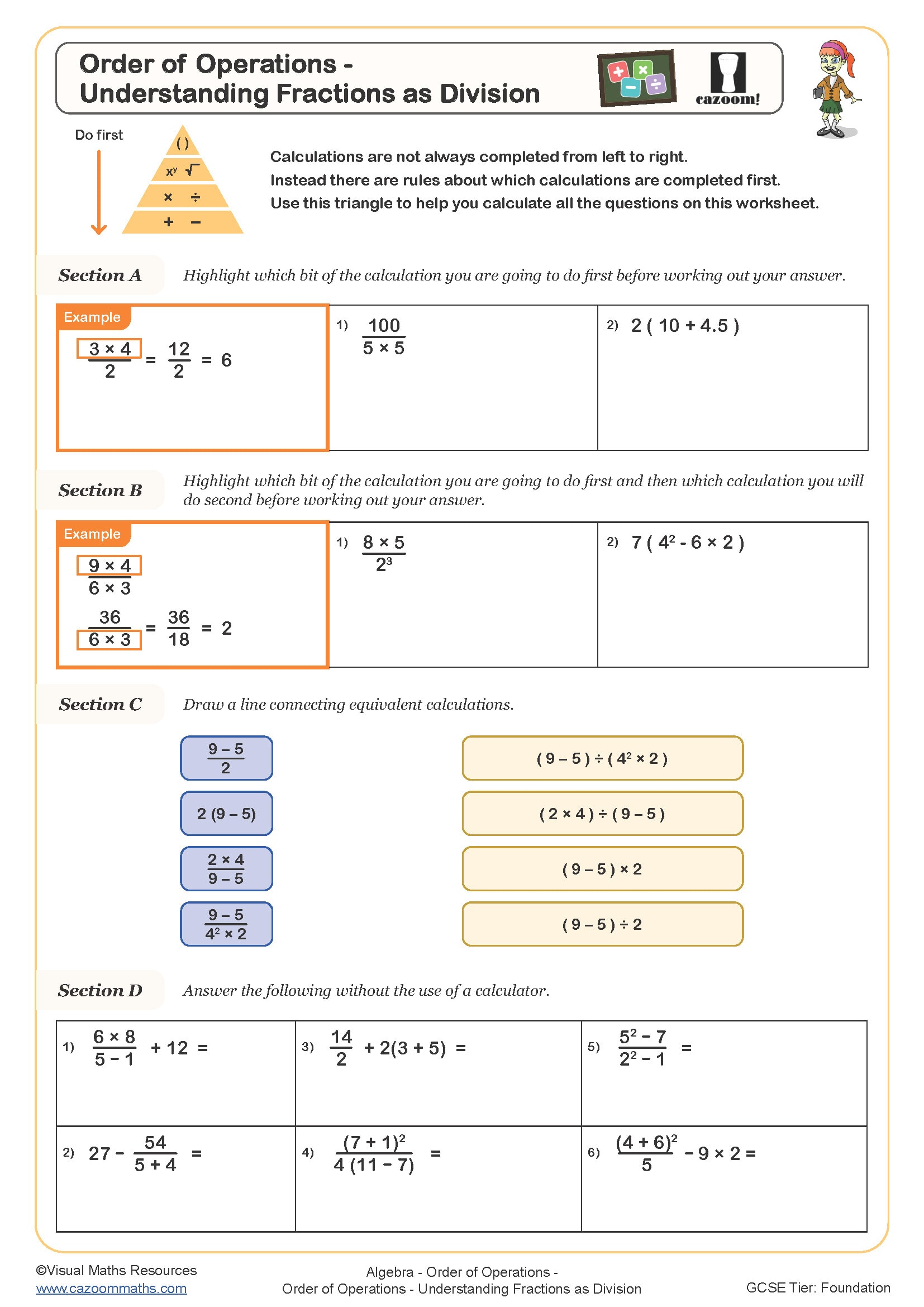Year 9 Order of Operations Worksheets
Why Should Teachers Start With Our Printable Year 9 Order of Operations Maths Lessons?
Mathematical accuracy depends on understanding operation hierarchies, particularly as Year 9 introduces complex algebraic expressions requiring multiple calculation steps. Students who perform these exercises repeatedly will learn BODMAS sequences automatically, which leads to fewer mistakes when solving problems with nested brackets and negative numbers and indices. The development from numerical to algebraic content follows the rising difficulty levels which students face throughout their academic progression. The worksheets help students overcome their existing operation precedence errors, which they learned in previous years, by teaching them to solve problems through step-by-step methods. The repeated practice of different problem types helps students learn the correct order of steps, which they will perform automatically during test time.
Specific learning benefits include:
• Eliminates bracket expansion errors
• Strengthens algebraic manipulation skills
• Develops systematic problem-solving approaches
• Improves multi-step calculation speed
• Master negative numbers and indices
• Prepares for GCSE algebra topics
• The foundation for creating scientific formulas exists in this section.
Worksheet Topics at a Glance: KS3 Order of Operations and More
The progression through these worksheets follows a carefully structured pathway from concrete numerical examples to pictorial representations and finally abstract algebraic expressions. Year 9 students begin reinforcing BODMAS fundamentals before advancing to nested brackets, fractional indices and combined operations involving variables. Each worksheet includes detailed answer keys showing complete working, helping students understand mathematical reasoning alongside correct solutions.
The worksheets in this collection include:
• Order of Operations with Integers: Practising BODMAS rules with whole numbers and
• Order of Operations with Fractions: applying correct sequences when fractions are involved
• Order of Operations with Decimals: maintaining accuracy through decimal calculations
• Order of Operations with Indices: handling powers and roots within complex expressions
• Order of Operations with Brackets: managing nested and multiple bracket structures
• Order of Operations with Algebra: advancing to multi-variable algebraic expressions
• Order of Operations Mixed Practice: combining all skills in varied problem contexts
• Order of Operations Problem Solving: applying BODMAS to word problems and real scenarios
• Order of Operations Challenge Questions: extending able students with complex multi-step problems
How Year 9 Algebra Activities Outshine Group Activities for Practice
Mathematics departments value these worksheets for their clear differentiation structure, which allows teachers to assign appropriate challenges across the ability spectrum without creating multiple resources. The scaffolding system provides visual assistance and organised structures to help students who need help while offering creative extension questions for advanced learners. The worksheets distribute their content equally between procedural fluency and conceptual understanding to prevent students from memorising procedures like other BODMAS resources do. The teachers value the exact match of the program to national curriculum standards because it enables easy progress monitoring. The printable format enables teachers to utilise the material in various ways for classroom activities, homework, and revision work, while the professional design keeps students engaged with the material. The PDF resources function independently from digital platforms because they do not need continuous internet access, which enables students to study independently, while parents can monitor their progress.
From Shopping to Sports: Real-Life Order of Operations for Year 9 Pupils
Understanding operation sequences proves essential when students encounter multi-step calculations in everyday situations, from computing discounts to analysing sports statistics.
• The process of calculating total cost requires handling various discount percentages in conjunction with different VAT rates.
• Working out compound interest on savings accounts
• The process of finding average speeds for various parts of a trip requires analysis.
• Computing mobile phone bills with various tariff components
• The assessment of gaming scores depends on the evaluation of both multiplier values and bonus point systems.
• The process of creating recipes requires ingredient quantities to be adjusted according to specific requirements.
• Programming calculators and spreadsheets with formula syntax
• Calculating energy usage from utility statements requires specific procedures to follow.


